Serious music on the eve of Christmas. History of creation "Reqiem" of Mozart
 We invite admirers of serious music on December 19 to enjoy sounding of the great work of the great composer. Orenburg regional philharmonic hall at 19:00. Execute: Orenburg municipal chamber choir (artistic director засл. artist of the Russian Federation Olga Serebriyskaya) and Chamber orchestra of the Orenburg philharmonic hall. The invited conductor - the winner of the international competitions GEORGY GROMOV (Germany)
We invite admirers of serious music on December 19 to enjoy sounding of the great work of the great composer. Orenburg regional philharmonic hall at 19:00. Execute: Orenburg municipal chamber choir (artistic director засл. artist of the Russian Federation Olga Serebriyskaya) and Chamber orchestra of the Orenburg philharmonic hall. The invited conductor - the winner of the international competitions GEORGY GROMOV (Germany)
The REQUIEM by MOZART - one of the most favourite works of the classical repertoire of the Orenburg chamber choir.
Several words about this work (on the materials http://soundtimes.ru)
The requiem – a Catholic solemn requiem mass. She has not enough relation to liturgical ceremonies, and treats concert works rather.
Mozart with unusual plasticity transfers emotional expressiveness of contents in this work. Alternation of pictures of grief and mourning of the terrestrial person asking about Lord's forgiveness, and anger of God, choral numbers symbolizing a voice of believers, and the solo parts marking the God's voice, nuances and force of sounding – everything serves the purpose of the maximum impact on the listener.
Only the first are recognized officially belonging to the composer's hand from 12 numbers 7...
HISTORY of CREATION "Reqiem":
History of creation of this world famous requiem mass - one of the most mysterious, tragic and full contradictory facts and certificates not only in ingenious Mozart's biography.
In the summer of 1791, last year of life of the composer, on an apartment threshold Motsartov has appeared the mysterious person in a gray attire. His face has been hidden by a shadow, and a raincoat, despite a heat, covered a figure. The ominous newcomer has stretched to Wolfgang the order for the composition of a requiem mass. The deposit was impressive, term was left to the discretion of the author.
In what precisely the moment work has been begun, it is impossible to establish today. He mentions work on all compositions which have appeared during this period in well remained Mozart's letters. Only "Requiem" isn't mentioned anywhere. With one exception: in the letter which reliability is challenged Wolfgang complains of severe headaches, nausea, weakness, of continuous visions of the mysterious stranger who has ordered a mourning mass, and a presentiment of own fast death …
The image of the black demonic person has shaken imagination not only Mozart who at that moment was excessively susceptible to similar mysticism because of unclear changes in an organism and mentality. Pushkin hasn't ignored this mysterious story with the messenger of death in "Small tragedies". Later the same black person appears in Yesenin's poetry (the poem of the same name).
It isn't clear if not to tell more – is shocking – story with his funeral. Money in family wasn't at all, on the organization of a funeral Wolfgang's friend baron van Sviten has given the sum which was enough for a funeral according to the 3rd category. It was the century of epidemics, under the decree of the emperor all similar procedures were strictly regulated. the 3rd category meant existence of a coffin and burial in a common grave. Mozart, the most great genius of mankind, have buried in the general hole in about ten other poor people. The exact place is unknown still: there was nobody it to make. Already in Saint Stefan's cathedral where have brought simple, hardly otesanny pine coffin with Wolfgang's body for a burial service, nobody accompanied him – is written so down in the church book by the pastor. Neither the widow, nor friends, nor brothers masons have gone to follow him to the grave.
Contrary to popular belief, almost right after the death of the maestro the unknown customer appeared with the score. It was the count Valzegg-Shtupakh who madly liked to play music, played a flute and a violoncello. He sometimes ordered to composers of the composition which I gave then for the. In February, 1791 his wife has died, as a keepsake about her the mourning mass to Mozart has been ordered. Thanks to the count it not only has been published after the death of the composer, but also for the first time has been executed 2 years later – on December 14, 1793. Nobody then has called in question that he hears the original composition, tragic top of works of the most great composer Wolfgang Amadeus Mozart.


